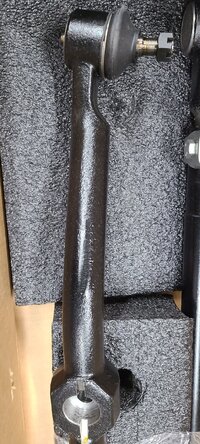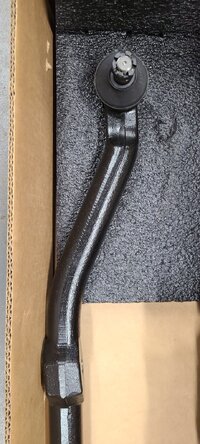Can anyone explain why the drag link is designed with only one end that is replaceable? The tie rod end (TRE) that's connected to the pitman arm can be purchased separately but the TRE at the passenger side knuckle is one solid piece. When that side wears out, it's time for a new drag link. Why not design the drag link with two separate TRE's, like the tie rod is?


I realize there's a signification bend on this end required to clear the axle when steering. It seems though that there still could be room to incorporate another threaded portion and clamp sleeve. Perhaps not?
Does it have to do with manufacturing reasons? If so, is it process related or just cost driven? I realize that adding another separate TRE would add cost to the design. Maybe the added cost outweighs the convenience gain for the end user?
Does it have to do with steering geometry? I recognize that adding a straight threaded portion to the drag link would slightly change the connection angle at the knuckle. Does that tip the balance toward poor street manners?
I've given this some thought and some heavy debate with a close friend. I'm expecting the answer to be rather simple. Hopefully you all (@mrblaine) can enlighten me. Thanks much.


I realize there's a signification bend on this end required to clear the axle when steering. It seems though that there still could be room to incorporate another threaded portion and clamp sleeve. Perhaps not?
Does it have to do with manufacturing reasons? If so, is it process related or just cost driven? I realize that adding another separate TRE would add cost to the design. Maybe the added cost outweighs the convenience gain for the end user?
Does it have to do with steering geometry? I recognize that adding a straight threaded portion to the drag link would slightly change the connection angle at the knuckle. Does that tip the balance toward poor street manners?
I've given this some thought and some heavy debate with a close friend. I'm expecting the answer to be rather simple. Hopefully you all (@mrblaine) can enlighten me. Thanks much.

